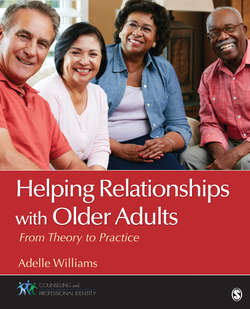Читать книгу Helping Relationships With Older Adults - Adelle M. Williams - Страница 75
На сайте Литреса книга снята с продажи.
Healthy Lifestyle
ОглавлениеMuch of what we call aging results from lack of exercise, smoking, other addictions, poor nutrition, falls, and stress. The challenge is to distinguish the late-life conditions that are truly unavoidable from those caused by disuse and lack of movement. However, this distinction is often lost in mainstream elders’ health care, and age denial keeps many who are under 60 from realistically assessing their chances of reaching 80 intact.
Increased susceptibility to disease often accompanies aging. Age-dependent conditions (those that rise steadily with age) include vision and hearing loss, Type 2 diabetes, hip fracture, Parkinson’s disease, dementia, pneumonia, incontinence, and constipation. Measurements of health and ability show gradual rather than precipitous changes with age, according to the Baltimore Longitudinal Study of Aging.
To keep older adults healthy, it is important to prevent chronic diseases. Chronic diseases are ongoing (usually lasting a year or more), generally incurable illnesses or conditions that require ongoing medical attention and affect a person’s daily life. Some of the most prevalent and costly chronic diseases include arthritis, cancer, cardiovascular disease, depression, and others that lower the quality of life (Anderson & Horvath, 2004; Hwang, Weller, Ireys, & Anderson, 2004; National Center for Health Statistics, 2008). Approximately 80% of older adults have one chronic condition, and 50% have at least two (Agency for Healthcare Research and Quality, 2005). The Centers for Disease Control and the Merck Company Foundation (2007) have identified five priorities for improving older adults’ health and quality of life: (1) promote healthy lifestyle behaviors, (2) increase older adults’ use of clinical preventive services, (3) address cognitive impairment issues, (4) deal with issues related to mental health, and (5) provide education on planning for serious illness.
The increasing number of older Americans poses significant challenges for our nation’s public health system. The current focus is to promote health and functional independence to help older adults stay healthy and remain in their homes. When older adults practice healthy behaviors, make use of clinical preventive services, and continue to engage with family and friends, they are more likely to remain healthy and to live independently (Centers for Disease Control and Prevention and the Merck Company Foundation, 2007).
